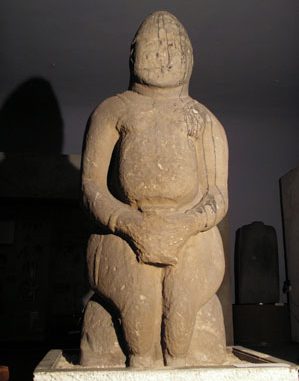
It is made of sandstone, 149 cm high. It comes from the village of Kotivka, Magdalinivsky district, Dnipropetrovsk region. Polovtsian stone statues (babies) are associated with ancestor worship. They were installed in memorial and burial sanctuaries located on the tops of kurgans (ancestral burial grounds). This statue is made in the style of ethnographic realism. Therefore, we see the full armor of a warrior, a warrior hairstyle in three braids, a hemispherical helmet on his head, a wallet on his belt. In the warrior’s hands (near his stomach) is a libation vessel, which he holds not in one hand, as it is depicted on earlier Scythian statues (the image of a feasting hero), but carefully in both hands so as not to spill and deliver the drink to the altar or altar. The statue of the Polovtsian warrior is also the embodiment of Tengri Khan, the eternal blue sky that was above the head of the nomads.

